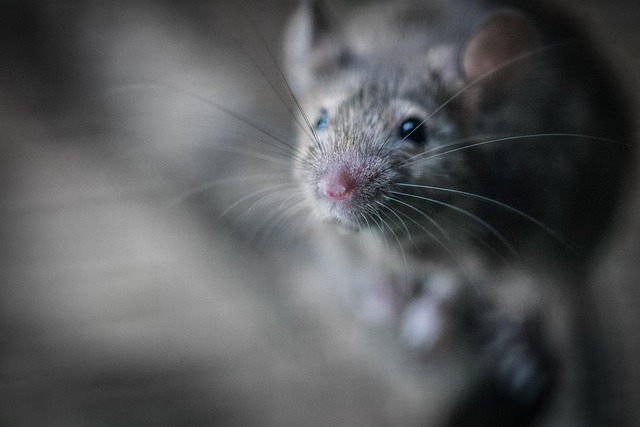Stinging pest infestations, involving wasps, hornets, and yellow jackets, require professional intervention from residential stinging pest services. These experts utilize specialized knowledge and tools for accurate identification and safe removal of nests. The process includes inspection, tailored treatments like repellents, traps, or chemical applications (e.g., hive relocation), and prevention strategies to avoid reinfestation. Regular inspections, maintenance, and professional services complement integrated pest management (IPM) practices, offering eco-friendly alternatives while minimizing chemical use for a safer, more sustainable environment.
Stinging pests can turn a peaceful evening outdoors into an uncomfortable experience. From bees and wasps to hornets and yellow jackets, these intruders pose not only a health hazard but also disrupt your home’s comfort. Understanding their behavior is key to effective control. This article explores various treatment methods for residential stinging pest infestations, highlighting the importance of professional services, preventive measures, and long-term solutions to ensure a sting-free haven. Discover how to tackle these pests head-on with the right approach.
Understanding Stinging Pest Infestations: Common Pests and Their Behavior
Stinging pest infestations can be a serious nuisance, causing discomfort and even posing health risks to residents. Understanding these pests is the first step in eliminating them effectively. Common stinging pests include wasps, hornets, and yellow jackets, which are social insects living in colonies with a queen. They build nests in various locations around homes, such as trees, shrubs, attics, or even underground. These pests are most active during the warmer months, seeking sweet substances for food while also defending their territories aggressively.
Residential stinging pest services play a crucial role in managing and eradicating these infestations. Professional exterminators employ specialized knowledge and tools to identify nest locations, understand pest behavior, and implement tailored treatments. By addressing the problem at its source, these services ensure long-lasting relief for homeowners, providing safe and effective solutions to minimize future disturbances.
Identifying Effective Treatment Methods for Residential Areas
When it comes to addressing stinging pest infestations in residential areas, identifying effective treatment methods is paramount. Homeowners often turn to professional residential stinging pest services for reliable solutions. These services employ specialized knowledge and tools to pinpoint the specific type of stinging pest causing the issue, be it bees, wasps, or yellow jackets. Understanding the behavior and habitats of these pests is crucial in developing tailored strategies that ensure their safe removal without harming residents or pets.
Effective treatment begins with an extensive inspection to assess the extent of the infestation and identify potential entry points. Professionals then utilize a combination of methods, including repellents, traps, and in some cases, chemical treatments. For instance, bee hives might be relocated, while wasp nests can be removed or treated with insecticides. The goal is to eliminate the pests humanely, prevent reinfestation, and restore peace of mind for residents.
Professional Residential Stinging Pest Services: Advantages and Applications
Professional Residential Stinging Pest Services offer a comprehensive and effective solution for eliminating infestations caused by stinging pests like bees, wasps, and hornets. These specialized services are designed to address the unique challenges posed by residential areas, ensuring safety and minimizing disruption during the treatment process. One of the primary advantages is their ability to locate and target nest sites with precision, using advanced techniques and equipment that are often inaccessible to homeowners.
The applications of these services span various scenarios, including routine pest prevention, emergency situations like severe wasp nests, and post-construction cleanup. They employ a range of safe and eco-friendly methods, from traditional chemical treatments to innovative non-toxic solutions, catering to diverse needs and preferences while maintaining the well-being of occupants and local ecosystems.
Preventive Measures and Long-Term Solutions to Avoid Reinfestation
Preventative measures are key when it comes to managing and avoiding reinfestation by stinging pests. Regular inspections and maintenance can significantly reduce the risk of an infestation recurring. For residential areas, ensuring that doors and windows are sealed properly, filling in any gaps or cracks, and keeping outdoor spaces clean and free from debris will create a less hospitable environment for these pests. Additionally, using professional residential stinging pest services to conduct regular treatments can offer long-term solutions, as experts can identify and address unique local conditions that may attract these insects.
Long-term strategies involve adopting an integrated pest management (IPM) approach. This involves combining various techniques such as biological control (using natural predators), cultural practices (maintaining good hygiene), mechanical methods (physical removal or traps), and targeted applications of pesticides when necessary. By implementing IPM, residents can effectively manage stinging pests while minimising the use of chemical treatments and ensuring a safer, more sustainable environment for both humans and local ecosystems.
In addressing stinging pest infestations, a multi-faceted approach combining understanding pest behavior, effective treatment methods, and preventive measures offers the best solution. For severe or persistent cases, professional residential stinging pest services provide specialized expertise, ensuring lasting relief. By implementing these strategies, homeowners can reclaim their living spaces, enjoying peace of mind free from these irritating intruders. Remember, proactive prevention is key to avoiding reinfestation, maintaining a comfortable and pest-free home environment.
